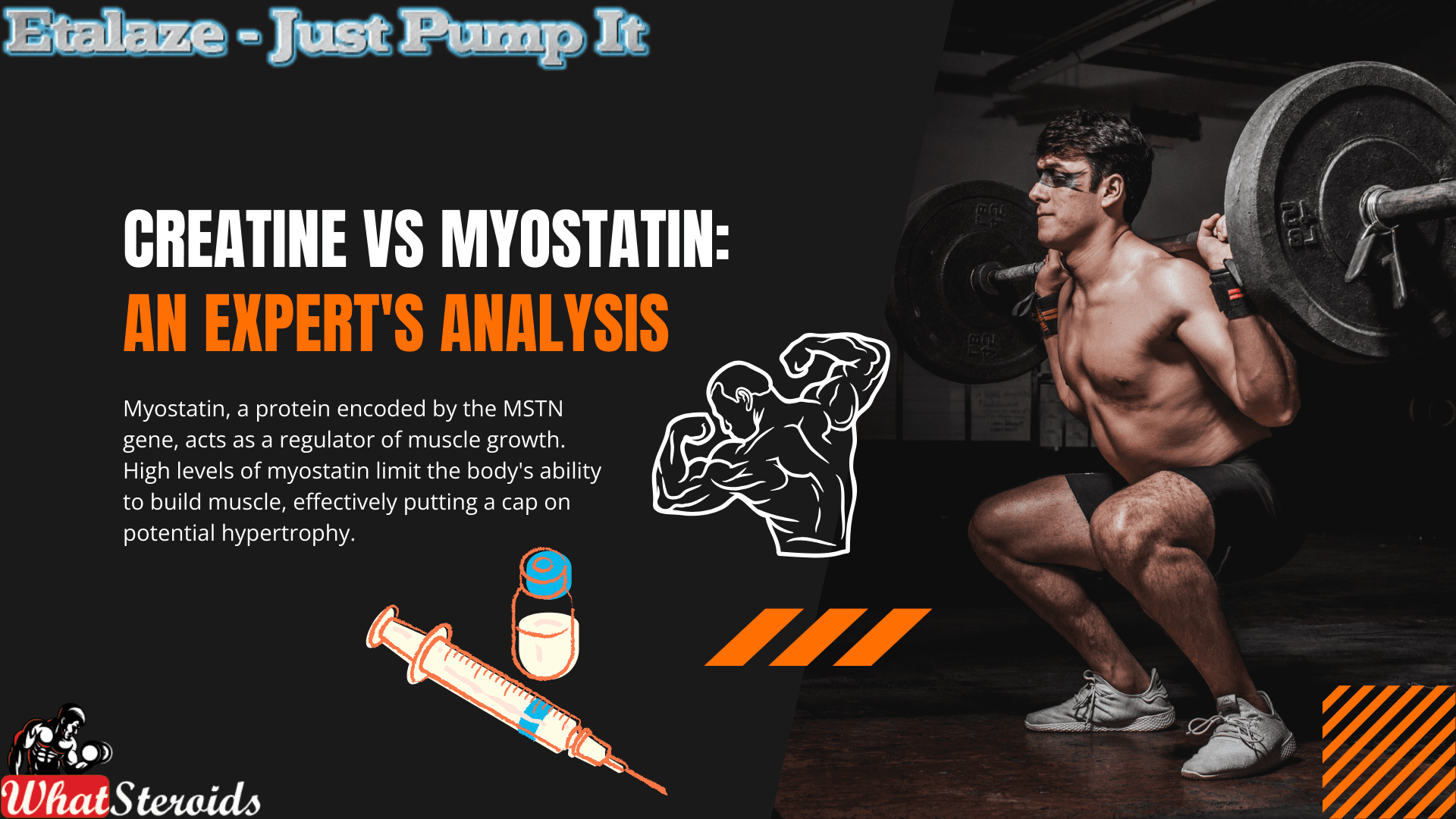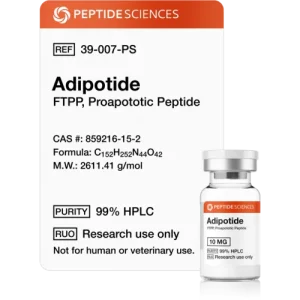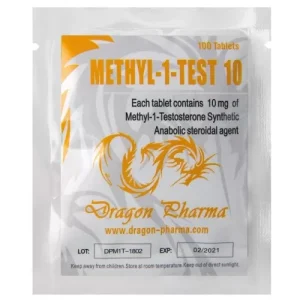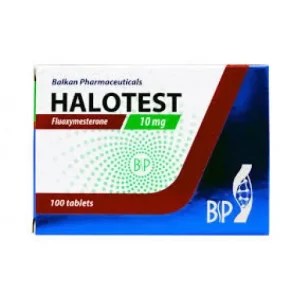Steroids
How To Bulk Up Without Getting Fat – The Essentials

Introduction
It's winter, which means bulk-up time! This article will give you some advice on how to do it properly this year, getting the muscle mass up without turning into a walking bucket of grease. Read on to find out how to bulk up without getting fat.
Legal Steroids
First Things First: Some Fat Isn't Avoidable
Guys, bulking up targets muscle gain, but gaining some fat is inevitable. Why? Because that is how nature works, when you are up to your caloric intake, your body's ancient mechanism starts deciding what to do with it. Yes, you will train hard, and most of that new weight will be muscle (and water), but some will end up stored as fat.
Cutting Stack >> HERE.
The same goes for cutting—you can't just choose to burn fat; you will also lose some muscle mass. There's a catch, however—steroids. If you are juiced up, you will only get the good part of both bulking/cutting, but even then, it is possible to get fat or burn muscle if you are not doing it right.
So what's the point of this article? The point is not to get fat. There is a big difference between getting some fat and turning it into a mush that almost looks like he never trained before. It makes a big difference for someone who wants to know how to bulk up.
Must Read: Bulking Up? Why Do you Need a Trainer at the Beginning?
This article will go through some tips to help you manage your nutrition, leading to a "clean" bulk (we will get to that later too). It is not only necessary because it is healthier. As we know you only worry about gains. It is crucial as it will make the cutting process much easier because that is where things fail—you bulk up too much and just become fat. That is what we want to avoid. Let's go!
Buy it >> HERE
Tip #1: Give It Enough Time
Making a bulking plan is the same as making any other plan in your life. If you can't become fluent in a foreign language in two months, it is impossible to gain 20 pounds and then shred them down in two months.
If you are natural, your best approach is to use the whole winter to bulk up and the entire spring to cut and get lean for the beach season. Of course, this is irrelevant if you are not getting ready for the summer; the time needed is the point. That will give you enough time to do things properly, minimizing fat gained. Your goal is to gain 0.5/1 lbs per week, not more! So, if you are bulking for two months, that will be 4-8 lbs of total body weight. Remember that this is fat, muscle, water, and everything else that follows.
If you are short on time, clean bulk is your only option, as you don't want to risk staying fat; therefore, if you don't have time to go through an actual bulk followed with a cut, increase your protein intake and closely monitor your physique and waist circumference.
Tip #2: Up Your Protein
It should be clear that if you are looking to bulk (gain weight), you will need to enter a caloric surplus, which means you will need to consume more than you spend. Without this, adding muscle mass fast won't happen unless you are a beginner. But, if you want to do bulk the right way, your primary focus should be to increase your protein intake. Proteins are the central building block of muscle, and since your goal is to increase muscle mass by taking more calories, proteins are your ally.
So, include a protein-rich meal in your diet. It can be eating a big can of tuna, chicken breast, and a salad for dinner or drinking a protein shake in the morning and before workouts. You can also start eating more dairy products, such as cottage cheese and Greek yogurt. And, of course, eggs are your friend and an inexpensive protein source. If you are a beginner and underweight, this alone will help you gain muscle, especially if you haven't supplemented with protein.
Related Article:: Best Nutrition Plan during Cutting and Bulking Steroid Cycle
Tip #2: Watch The Junk
While beginners can benefit only by adding a protein-rich meal daily, more advanced lifters and bigger guys will need a more radical approach.
Eating more fatty foods is the easiest way to increase your caloric intake. Fats have nine calories in a single gram, while proteins and carbs have four calories, making them much more "efficient." So yes, adding more fatty foods to your diet will result faster if you look at the calculation. Just be careful not to overdo it as it can make you fat quickly. Not only will you increase your total caloric intake, but by adding only fat to your diet, you will reduce your relative protein intake, which isn't great.
Buy it >> HERE
As for the carbs, you need those too, as they fuel your hard workouts (we will get to that later). But, opt for high-quality carbs, such as brown rice, sweet potatoes, and green veggies. You can also eat fruit. Try up your carbs before your workouts to maximize your effort, but reduce the intake after training, especially if you do it in the evening.
When reading this, you must think that junk food is an ideal bulking partner: it contains many calories, mostly from fat and carbs. However, not only is it unhealthy, but the combination of these high fats and high carb, ultra-processed foods will make you gain weight too rapidly, most stored as fat. Therefore, try to minimize the amount of food you eat, as you will have difficulty shedding that fat down.
Tip #3: Train Hard!
If you are upping your calories, more energy will be available to you, which means you must train harder. That can mean many things: upping the intensity, frequency, or volume, and in some cases, even a mix. The important thing is: that you are eating more, which means you need to do more.
There is a wrong kind of "more," which only focuses on strength. While yes, you will get stronger as your weight increases, as you'll have more leverage, that is not the goal here. The goal is to gain muscle mass, so avoid training in the lower rep ranges. Keep your sets in the "bodybuilding zone," which is 8-12 reps for most movements. But, as we said before, up the intensity too, by adding more weight to the bar and getting (close) to failure.
Find it >> HERE
Also, the focus of the majority of your workouts should be on compound movements. You have more energy, so there is no reason why you shouldn't go hard on those significant lifts. Lowering the rep range to go extra heavy would be best, but don't go below five. And make sure you follow up the compounds with some isolations, as they are less taxing on the body.
Tip #4: Prioritize Recovery
While it is true that your recovery will be much better when you are in a caloric surplus, as there is enough in the bloodstream to mend those muscles, you should still make sure you are getting adequate rest. That's because you will train harder, increasing your primarily catabolic stress hormones.
Find it >> HERE
So, prioritize rest. Make sure you sleep at least 7-8 hours per night. But, also make sure you are not overtraining. Train hard, but have a reasonable plan, and leave at least one, ideally two days off every week. And plan reduction weeks, where you will let your body recover and catch up. You can do these once every four weeks or eight weeks, depending on your exercise intensity and the length of your bulking cycle.
Tip #5: Track Progress
This one is essential, as it separates you from getting obese. It would help if you tracked your progress regularly to have the right picture of it and adjust accordingly. First, take a picture of your physique before starting, and continue taking pictures monthly. Make sure you take side pictures as well, which will get you a better view of the size of your gut.
Also, once per week, on an empty stomach, measure your weight and weight circumference in the morning. The goal is to weigh more without getting fatter, and your waist will be a good indicator of this. But, it would help if you also took measurements of your other body parts, such as quads, chest, biceps, and back. That will tell you if your muscles are growing and will serve as a tremendous motivator to continue doing things the right way. However, this is a slow process; once per month is more than enough.
Tip #6: Don't Forget Cardio
While this sounds counterintuitive, as Cardio is a tool used for cutting, doing Cardio will also help your clean bulk efforts. Cardio is essential for health, and avoiding it will hinder your longevity. So, 2x per week, on those days you are not going heavy, do a 30-minute cardio session. It can include rowing, swimming, jogging, or riding a (stationary) bike. Make sure you opt for low-intensity rather than HIIT, as you will already go heavy on your weights workouts.
Must Read:: Best Cardio And Weight Exercises To Lose Weight
Cardio will also help your recovery, as it will get the blood flowing through those damaged muscles, helping them heal.
Tip #7: Consider supplements
As we noted, this article is primarily for natural lifters. If you are on steroids, you will probably be able to bulk even if you are not that careful. But, natural lifters will have to do things the hard way and get fewer results.
Therefore, supplementing is critical. First, if you are not using it, creatine alone will make you bulk up very fast. It will tie water to your muscles, increasing your weight and size. Also, it will give you more energy, allowing you to lift harder, resulting in more muscle gains in the long run.
We mentioned protein before, and supplementing with quality when protein powder is always a good option during your bulking phase. If you don't tolerate it or are a vegan, opt for something plant-based, such as brown rice or pea protein. As for the other supplements, you can try weight gainers if you struggle to eat regularly. Or, you can use caffeine-based pre-workouts to give you a boost, which will allow you to train harder.
But remember that supplements are the only ones that should improve your nutrition, not replace it. In other words, focus on natural foods.
Conclusion
That was our take on bulking. Following our tips will likely gain quality weight in your bulking phase, drastically minimizing the need to cut down before summer. Doing things slowly while tracking your progress, training hard, and focusing on quality foods is always the best approach that will lead to long-term results. Remember, if you only aim for the summer season, you will need to start again once you get back from the holidays. It is much better to embrace a fitness lifestyle and stay fantastic all year round.
Stay strong!
Steroids
Creatine vs Myostatin: An Expert’s Analysis

Myostatin, a protein encoded by the MSTN gene, acts as a regulator of muscle growth. High levels of myostatin limit the body's ability to build muscle, effectively putting a cap on potential hypertrophy. Inhibiting myostatin has become a focal point for bodybuilders looking to break through plateaus and achieve significant muscle gains. The question is: can creatine, a popular and widely available supplement, help in this regard?
Medical History of Myostatin and Creatine
Myostatin and creatine, while popular now in the bodybuilding world, have their roots in entirely different contexts:
Myostatin: Natural Muscle Growth Regulator
Myostatin is a protein originally identified for its role in regulating skeletal muscle mass. In nature, it serves an evolutionary purpose: by limiting muscle growth, it conserves energy, ensuring that animals (and humans) don’t expend unnecessary resources maintaining excessive muscle tissue. This was especially important in the wild, where energy efficiency could mean the difference between survival and extinction.
 Check Adipotide (FTPP) 10mg by Peptide Science
Check Adipotide (FTPP) 10mg by Peptide Science
In the medical field, research into myostatin has focused on its role in muscle-wasting diseases. Scientists are exploring ways to inhibit myostatin to treat conditions like muscular dystrophy, where excessive muscle loss impairs quality of life. This therapeutic potential is where the idea of myostatin inhibition first began—long before bodybuilders latched onto the concept.
Creatine: Energy and Medical Applications
Creatine was originally studied for its role in energy metabolism. It’s a naturally occurring compound stored in muscle cells and plays a critical part in replenishing ATP (adenosine triphosphate), the body’s primary energy currency during short, high-intensity activities.
Before becoming a bodybuilding staple, creatine gained recognition in medical and sports science for its ability to improve athletic performance and assist with recovery. Furthermore, in medicine, creatine was investigated for neurological conditions such as Parkinson’s disease, Huntington’s disease, and muscular dystrophy, given its potential to improve muscle function and brain energy metabolism.
In the sports world, it was initially adopted by sprinters and weightlifters in the 1970s and 1980s for its energy-enhancing benefits.
Both myostatin and creatine have found new life in bodybuilding circles, demonstrating how discoveries in natural physiology and medical science can lead to transformative applications in fitness.
Benefits of Creatine as a Myostatin Inhibitor
Muscle Growth Potential: Research suggests that creatine, when paired with intense resistance training, may inhibit myostatin to a degree, fostering an environment for enhanced muscle growth.
Improved Exercise Performance: Creatine is well-known for its ability to increase ATP production, translating to better performance during high-intensity activities.
Versatility Across Fitness Levels
Whether you're a beginner or an advanced athlete, creatine offers benefits that complement various stages of muscle-building.
Must Read: A New Caffeine? What You Need to Know about Teacrine
Affordability and Accessibility
Compared to specialized myostatin inhibitors like YK-11 and ACE-031, creatine is significantly more affordable and accessible.
Side Effects of Creatine
While generally safe for most individuals, creatine supplementation does come with some potential side effects:
Water Retention: Some users experience bloating due to increased water retention in muscle cells.
Gastrointestinal Issues: High doses may lead to stomach upset or diarrhea.
Kidney Concerns: Although rare, prolonged excessive use could strain the kidneys, particularly in individuals with pre-existing conditions.
 Buy Methyl-1-Test 10 -100 tabs by Dragon Pharma
Buy Methyl-1-Test 10 -100 tabs by Dragon Pharma
Alternatives to Creatine for Myostatin Inhibition
YK-11: A synthetic myostatin inhibitor derived from SARMs, offering more potent results but accompanied by more significant risks.
ACE-031: A peptide that directly inhibits myostatin, though it remains in experimental phases and is not legally approved in many regions.
Natural Alternatives
Follistatin-rich Foods: Eggs and dairy products may have natural myostatin-inhibiting properties.
Resistance Training: Intense and consistent weightlifting alone can naturally lower myostatin levels.
Where to Buy Creatine
Creatine is readily available worldwide. It can be purchased from:
Local Pharmacies and Nutrition Stores: Ideal for trusted and immediate access.
Online Platforms: Websites like Amazon, iHerb, or bodybuilding-specific stores offer a variety of brands and formulations.
Supplement Brands: Well-established brands such as Optimum Nutrition, MyProtein, and Cellucor often carry high-quality creatine.
Legality of Myostatin Inhibitors
Creatine: Creatine is completely legal and widely accepted as a dietary supplement.
YK-11 and ACE-031: These compounds exist in a legal gray area in many countries due to their experimental nature and potential risks. It's essential to research local laws before considering these options.
Best Stores and Suppliers
For reputable products, consider:
Transparent Labs: Known for purity and transparent labeling.
Optimum Nutrition: Offers pharmaceutical-grade creatine monohydrate.
Bulk Supplements: A great choice for bulk buyers seeking affordability and quality.
Our Advice to Bodybuilders
Always consult with a healthcare professional before starting any new supplement, especially if you are already using AAS or other advanced compounds.
Prioritize a balanced diet and consistent exercise routine. Supplements like creatine work best as part of a holistic approach to fitness.
Stay hydrated while using creatine to minimize water retention side effects and support kidney health.
Related Article: Best Syringes for Steroid Injection on Amazon
Overall
While creatine may not be as potent a myostatin inhibitor as advanced compounds like YK-11 or ACE-031, its affordability, safety, and accessibility make it a valuable addition to any bodybuilder's supplement stack. By leveraging its benefits alongside proper training and nutrition, you can maximize muscle growth and overcome plateaus, regardless of your fitness level.
Steroids
Raloxifene (Evista) 101: A Non-Surgical Solution for Gyno

Raloxifene, a selective estrogen receptor modulator (SERM), is one of the most valuable yet less common options available today. Originally developed to prevent and treat breast cancer similar to Tamoxifen, it has gained popularity among bodybuilders seeking to prevent or eliminate gyno.
 Click Here to Buy Evimed 60 by Deus Medicals
Click Here to Buy Evimed 60 by Deus Medicals
Unlike Tamoxifen, Raloxifene is potent enough to reduce long-standing gynecomastia and is frequently used to reverse pubertal gynecomastia. While it can also boost testosterone levels, it is one of the weaker SERMs in this regard.
How it Works
Raloxifene functions by blocking estrogen receptors in the breasts, which helps prevent or treat both gynecomastia and breast cancer. Additionally, it blocks estrogen receptors in the hypothalamus, stimulating testosterone production.
Beyond these primary benefits, Raloxifene can enhance bone mass, combat osteoporosis, and lower cholesterol levels.
Potential Side Effects
While Raloxifene is considered a generally safe and effective medication, like all drugs, it comes with its own set of potential side effects. One of the most notable is the reduction in Insulin-like Growth Factor 1 (IGF-1) levels. IGF-1 plays a key role in muscle growth and repair, so decreased levels could potentially impact athletic performance or recovery.
However, compared to other medications in its class, Raloxifene has a relatively low risk of causing severe liver toxicity. Users are less likely to experience harmful effects such as blood clots, mood swings, or sexual dysfunction, making it a preferable choice for many.
While rare, some users might experience less serious side effects such as hot flashes, leg cramps, or flu-like symptoms. It's essential to consult with a healthcare professional to monitor any adverse reactions and ensure the medication is being used safely.
So, despite its efficacy, Raloxifene is not without side effects, but they are typically manageable and less severe compared to other SERMs.
Check Out Halotest 10 mg, Balkan Pharmaceuticals
For gyno reversal, the typical protocol involves taking 60mg daily for 1-2 weeks, followed by 30mg daily for up to 3 months or until the condition resolves.
Read More: Joint Stiffness on AAS, How to Manage It
Typical Protocol
For gynecomastia reversal, the typical protocol involves taking 60mg of Raloxifene per day for 1-2 weeks, followed by a reduced dose of 30mg per day for up to 3 months or until the gynecomastia is resolved. In post-cycle therapy (PCT), bodybuilders generally take 60mg per day for 4-6 weeks, and then lower the dose to 30mg per day during the last week. Raloxifene is highly effective for managing gynecomastia and supporting post-cycle recovery, making it a valuable addition to a well-optimized bodybuilding regimen.
Overall
Raloxifene (Evista) is a versatile SERM used to treat breast cancer and is popular among bodybuilders for managing gynecomastia (gyno). Unlike Tamoxifen, it effectively shrinks long-standing gyno and reverses pubertal gyno. It blocks estrogen receptors in the breast and hypothalamus, thus preventing gyno and promoting Testosterone secretion. Additionally, it improves bone mass, combats osteoporosis, and lowers cholesterol levels. For gyno, take 60mg/day for 1-2 weeks, then 30mg/day for up to 3 months. For post-cycle therapy (PCT), take 60mg/day for 4-6 weeks, then reduce to 30mg/day during the final week. This safe and effective medication has minimal side effects.
Bodybuilding
Mastering Bodybuilding in 2025: Top Fitness Tips for Success

Bodybuilding is more than just a sport; it's a lifestyle that requires dedication, discipline, and a thorough understanding of fitness principles. As the world of fitness continues to evolve, bodybuilders must stay updated with the latest trends, techniques, and scientific advancements to achieve their goals. In 2025, several innovative approaches are redefining bodybuilding. Here are essential fitness tips for bodybuilders to excel this year.
Read More: Bodybuilder Winter Clothing: Staying Warm and Stylish
Embrace Technology-Driven Workouts
In 2025, technology plays a significant role in bodybuilding. Wearable devices, fitness apps, and virtual reality (VR) training are now integral components of an effective workout regimen.
Wearable Devices
Modern wearables track everything from heart rate and sleep patterns to muscle activation and caloric expenditure. Utilize these devices to monitor your progress and make data-driven adjustments to your training and nutrition plans.
Fitness Apps
Leverage fitness apps for customized workout plans, progress tracking, and virtual coaching. Many apps now incorporate artificial intelligence to provide personalized feedback and recommendations.
Virtual Reality Training
VR technology offers immersive workout experiences, allowing bodybuilders to simulate different training environments and scenarios. This can enhance motivation and add variety to your routine.
Focus on Functional Strength
While hypertrophy (muscle growth) remains a primary goal, functional strength is gaining importance. Functional strength training improves overall performance, reduces the risk of injury, and enhances daily activities.
 Check Out Our1 4 Weeks Quality Strength & Lean Muscles
Check Out Our1 4 Weeks Quality Strength & Lean Muscles
Compound Movements
Incorporate compound exercises like squats, deadlifts, and bench presses. These movements engage multiple muscle groups and joints, promoting balanced strength development.
Core Stability
Prioritize exercises that strengthen the core, such as planks, Russian twists, and leg raises. A strong core supports better lifting mechanics and reduces the risk of lower back injuries.
Optimize Nutrition for Muscle Growth and Recovery
Nutrition is the cornerstone of successful bodybuilding. In 2025, the focus is on personalized nutrition plans tailored to individual needs and goals.
Protein Intake
Ensure adequate protein intake to support muscle repair and growth. Aim for 1.6 to 2.2 grams of protein per kilogram of body weight per day, depending on your training intensity and goals.
 Click Here to Buy SynthaTrope By SynthaPharma
Click Here to Buy SynthaTrope By SynthaPharma
Nutrient Timing
Pay attention to nutrient timing to maximize muscle recovery and growth. Consume protein and carbohydrates within 30 minutes post-workout to replenish glycogen stores and kickstart muscle repair.
Supplements
Utilize supplements wisely. Creatine, branched-chain amino acids (BCAAs), and omega-3 fatty acids are popular choices for enhancing performance and recovery.
Prioritize Mental Health and Mindfulness
Mental health is increasingly recognized as a critical component of overall fitness. Incorporating mindfulness practices can improve focus, reduce stress, and enhance performance.
Meditation
Incorporate meditation into your daily routine to reduce stress and improve mental clarity. Mindfulness meditation can enhance your mind-muscle connection during workouts.
Visualization
Use visualization techniques to mentally rehearse your workouts. Visualizing successful lifts and achieving your goals can boost confidence and motivation.
Rest and Recovery
Prioritize rest and recovery to prevent burnout and overtraining. Ensure you get 7-9 hours of sleep per night and incorporate rest days into your training schedule.
Leverage Advanced Training Techniques
Advanced training techniques can help break through plateaus and stimulate muscle growth. In 2025, several methods are gaining popularity among bodybuilders.
Blood Flow Restriction (BFR) Training: BFR involves restricting blood flow to the muscles during low-intensity exercises. This technique can enhance muscle growth and strength without the need for heavy weights.
Eccentric Training: Focus on the eccentric (lowering) phase of exercises. Eccentric training can stimulate greater muscle damage and growth compared to traditional concentric movements.
Periodization: Implement periodization into your training plan. Varying the intensity, volume, and type of exercises can prevent plateaus and ensure continuous progress.
Incorporate Recovery and Mobility Work
Recovery and mobility are essential for preventing injuries and maintaining optimal performance. In 2025, bodybuilders are paying more attention to these aspects of training.
Foam Rolling and Myofascial Release: Use foam rollers and massage balls to release muscle tightness and improve flexibility. Regular myofascial release can reduce soreness and enhance recovery.
Stretching: Incorporate dynamic stretching before workouts and static stretching after workouts. Stretching improves range of motion and prevents muscle imbalances.
Cryotherapy and Hydrotherapy: Explore recovery techniques like cryotherapy (cold therapy) and hydrotherapy (water therapy) to reduce inflammation and accelerate muscle recovery.
Engage in Continuous Learning and Community Building
The fitness industry is constantly evolving, and staying informed is crucial for success. Engage in continuous learning and connect with the bodybuilding community for support and motivation.
Educational Resources: Read books, watch videos, and attend seminars to stay updated on the latest research and trends in bodybuilding.
Community Engagement: Join online forums, social media groups, and local bodybuilding clubs. Sharing experiences and knowledge with fellow bodybuilders can provide valuable insights and encouragement.
Professional Guidance: Consider working with a certified personal trainer or coach. Professional guidance can help you optimize your training and nutrition plans, ensuring you're on the right track.
With your FB Plus subscription or active FB Plus Pass, you now have access to 124 weeks of our most popular workout programs, which typically sell for $10-$30 each. Additionally, our popular 4-week Meal Plan is included. This is on top of the 38 Challenges and Programs that are already available to Plus members.
We've also introduced a new feature that many of you have requested. To assist you in choosing your next program, you can now preview each day of any program from its detail view. This feature lets you see all the included workout videos and content before you schedule it, ensuring you know exactly what to expect.
Conclusion
In 2025, bodybuilding is more than just lifting weights; it's a holistic approach to fitness that encompasses technology, nutrition, mental health, and advanced training techniques. By embracing these fitness tips, bodybuilders can achieve their goals, stay injury-free, and enjoy a fulfilling fitness journey. Remember, consistency and dedication are key to success in bodybuilding. Stay committed, keep learning, and most importantly, have fun on your path to becoming the best version of yourself.
-

 Steroids2 years ago
Steroids2 years agoVOX Testing: Why Bodybuilders Must Have It Tested Regularly
-

 Steroids2 years ago
Steroids2 years agoShavers and Other Body Grooming Equipment for Bodybuilders In 2023
-

 Steroids2 years ago
Steroids2 years agoChatGPT and Other Avenues to Find Great Bodybuilding Coaches
-

 Steroids2 years ago
Steroids2 years agoBest Oil Recommendations Before Competition for Subtle Shimmer
-

 Steroids2 years ago
Steroids2 years agoPowerlifting Vs Power Building: Find Out the Big Difference and When to Shift Between the Two
-

 Nutrition1 year ago
Nutrition1 year agoEverything Nutritional Food: What’s Too Much Or Too Little
-

 Bodybuilding Products12 months ago
Bodybuilding Products12 months agoTelmisartan In Bodybuilding: An Expert’s Advice
-

 Anabolic Steroids1 year ago
Anabolic Steroids1 year agoLegality of Anabolic Steroids In Latin America
-

 Beginners2 years ago
Beginners2 years agoTren Cycle for Beginners
-

 Bodybuilding1 year ago
Bodybuilding1 year agoList of FDA-Approved Peptides
-

 Bodybuilding2 years ago
Bodybuilding2 years agoCompetition Prep Cycle for Pro Bodybuilders
-

 Bodybuilding1 year ago
Bodybuilding1 year agoChia Seeds in A Bodybuilder’s Diet: An Expert’s Advice
-

 Bodybuilding7 months ago
Bodybuilding7 months agoPrimal Movements: Our Ultimate Guide for Maximum Results
-

 Anabolic Steroids11 months ago
Anabolic Steroids11 months agoHow Much Do You Know About B-AET? A Fat Burner You’ve Been Missing
-

 Steroids11 months ago
Steroids11 months agoAnadrol Cycle: Benefits, Doses, Alternatives, etc.
-

 Anabolic Steroids8 months ago
Anabolic Steroids8 months agoJoint Stiffness: How to Manage It While on AAS
-

 Steroids9 months ago
Steroids9 months agoOmnitope (Oxytocin)
-

 Bodybuilding1 year ago
Bodybuilding1 year agoHow Much Is Too Much Cardio? Understanding Heart Rate Zones
-

 Product Reviews10 months ago
Product Reviews10 months agoTop Vitamins for Skin Health
-

 Bodybuilding8 months ago
Bodybuilding8 months agoHow Effective is Bone Broth for Recovery?
-

 Steroids10 months ago
Steroids10 months agoMajor Bodybuilding Peptides Explained
-

 Steroids8 months ago
Steroids8 months agoSleeping Positions for Effective Muscle Recovery
-

 Bodybuilding9 months ago
Bodybuilding9 months agoHormone Replacement Therapy (TRT) Cycle Guide
-

 Anabolic Steroids1 year ago
Anabolic Steroids1 year agoStart The New Year Strong With These Tips
-

 Bodybuilding1 year ago
Bodybuilding1 year agoCalorie Dumping: A Bodybuilder’s Guide



















